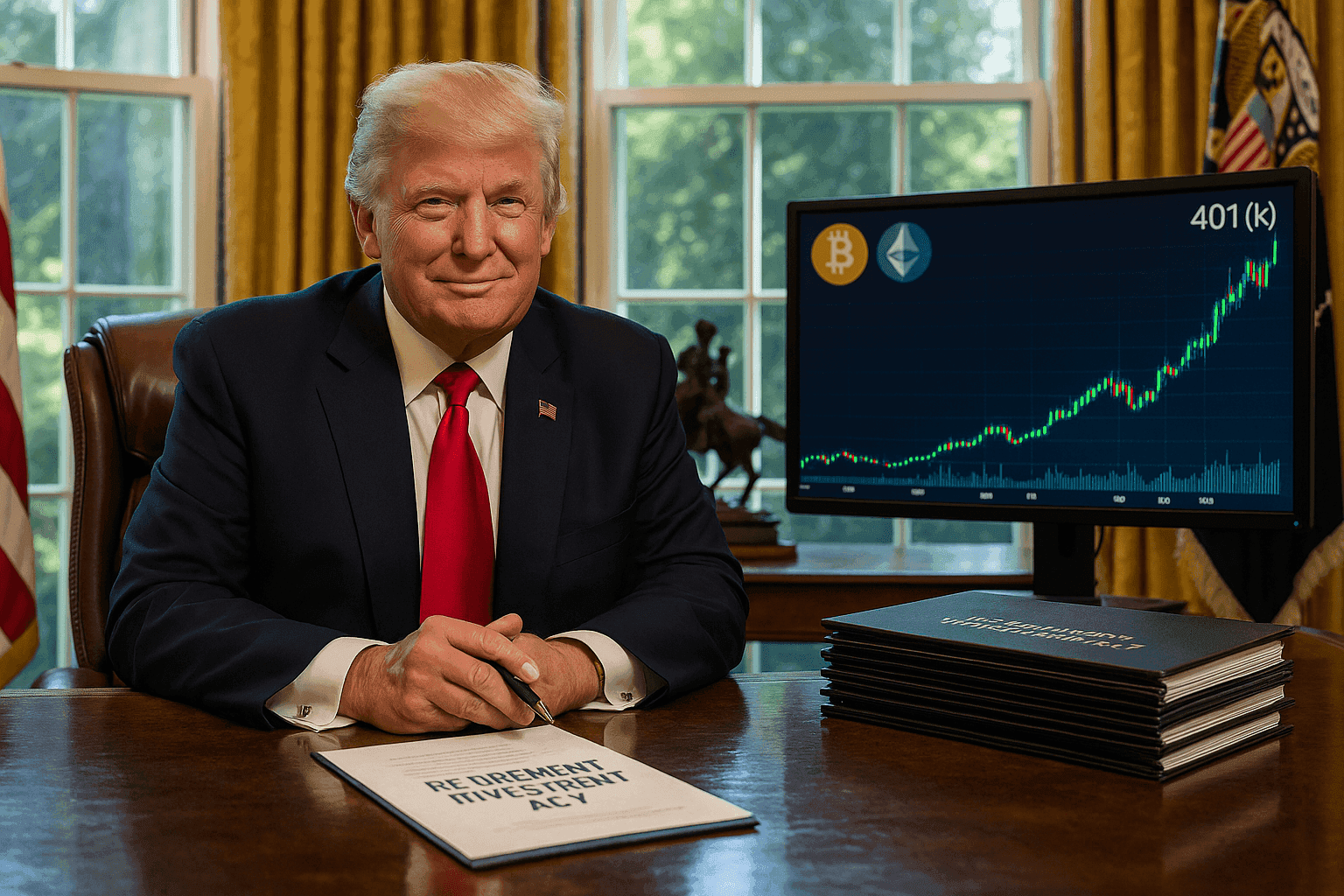
Trump Opens 401(k)s to Alternative Assets, Including Cryptocurrencies: A Turning Point for Financial Markets
Donald Trump has just signed a major executive order that could shake up the investment landscape in the United States. By allowing the inclusion of alternative assets—private equity, unlisted real estate, and cryptocurrencies—in 401(k) retirement plans, the administration is putting a potentially historic evolution on the table. This article delves into the economic, technical, and geopolitical implications of this major development.
1. Historical Context: Why 401(k)s Excluded Cryptos
401(k) retirement plans are a key pillar of long-term savings in the U.S. Historically designed to favor "safe" assets (listed stocks, bonds, money market funds), they excluded alternative assets due to three major hurdles:
- their volatility, considered incompatible with fiduciary obligations,
- the limited liquidity of private equity or real estate investments,
- the regulatory complexity related to custody, reporting, and fee transparency.
In 2025, the arrival of spot Bitcoin and Ethereum ETFs, coupled with a more open approach to financial innovation, began to shift the landscape. But the last barrier remained: the ability to include these products in federal retirement plans.
2. The Trump Order: What Are the Concrete Measures?
The order gives a clear mandate to the Department of Labor (DoL), Treasury, and SEC to adapt regulations. It does not force the integration of cryptocurrencies or alternative assets into all 401(k) plans, but explicitly opens up the possibility.
The goals are multiple:
- provide greater diversification for savers,
- ensure fee and product transparency,
- strengthen protection for savers within a fiduciary framework.
In practical terms, managers like Fidelity, Vanguard, or BlackRock could create dedicated compartments, or even optional windows allowing access to crypto ETFs or baskets of alternative assets.
3. Bitcoin, Ethereum, and ETFs: Who Will Really Be Affected?
3.1. Bitcoin and Ethereum
Interest in Bitcoin and Ethereum is nothing new. But this decision institutionalizes their potential role in retirement savings. With spot-backed ETFs, cryptocurrencies are now technically and legally accessible to regulated portfolios, paving the way for prudent allocations of 1 to 3% per saver.
3.2. ETF Providers
Crypto ETF issuers are becoming, de facto, strategic players. Their standardized, liquid, and reporting-compliant product is a key advantage for 401(k) managers, creating a direct bridge between crypto and traditional finance.
3.3. Major Retirement Platforms
Fidelity, Vanguard, and BlackRock have mature infrastructure to adapt their plan menus. They could offer an "alternative assets" investment window including crypto, private equity, and unlisted real estate, with clear and tailored terms.
3.4. Private Equity and Real Estate Players
These alternative managers could create 401(k)-friendly funds, offering greater liquidity, capped fees, and enhanced reporting to meet institutional investors' requirements.
4. Effects on Financial Markets
4.1. Short Term
The anticipation sentiment alone is enough to drive up the prices of affected assets. Bitcoin, Ethereum, ETFs, and platform stocks are all seeing a significant rise. Markets are also pricing in the prospect of accelerated crypto institutionalization.
4.2. Medium Term
If major managers quickly structure their offerings, massive capital flows could move into crypto. Even a 1% allocation in 401(k) plans would represent tens or even hundreds of billions of dollars in new assets.
4.3. Long Term
This is a case of enduring legitimation for cryptocurrencies as an asset class. With growing adoption through retirement plans, crypto-assets could establish a strategic position in long-term wealth creation.
5. Issues, Criticism, and Limits of the Measure
5.1. Volatility Risk
Bitcoin and Ethereum are subject to strong fluctuations. Unrestrained allocations could jeopardize retirement portfolios if poorly calibrated.
5.2. Security and Custody
Safekeeping cryptocurrencies requires robust guarantees: secure private key storage, third-party audits, compliance with current financial standards.
5.3. Governance and Conflicts of Interest
Some critics are concerned about a potential conflict of interest, fearing that the decision may benefit some issuers or entities linked to influential players. Transparency and proper oversight mechanisms will be crucial going forward.
6. Geopolitical and Institutional Stakes
By opening retirement savings to crypto, the administration reinforces the image of the United States as a central player in financial innovation, facing competition from more aggressive jurisdictions (Europe, Asia). On the institutional front, this sends a strong signal to global asset managers: crypto can now officially be included in regulated retirement structures.
7. Conclusion: Towards Mass Institutional Adoption
With this decision, Trump is not just putting crypto back in the spotlight: he is making it a seriously viable option for American retirement savings. It marks a historic milestone. For investors, it confirms that the wall between traditional and digital finance is disappearing for good. For cryptocurrencies, this could be the start of a massive and lasting wave of institutional adoption.